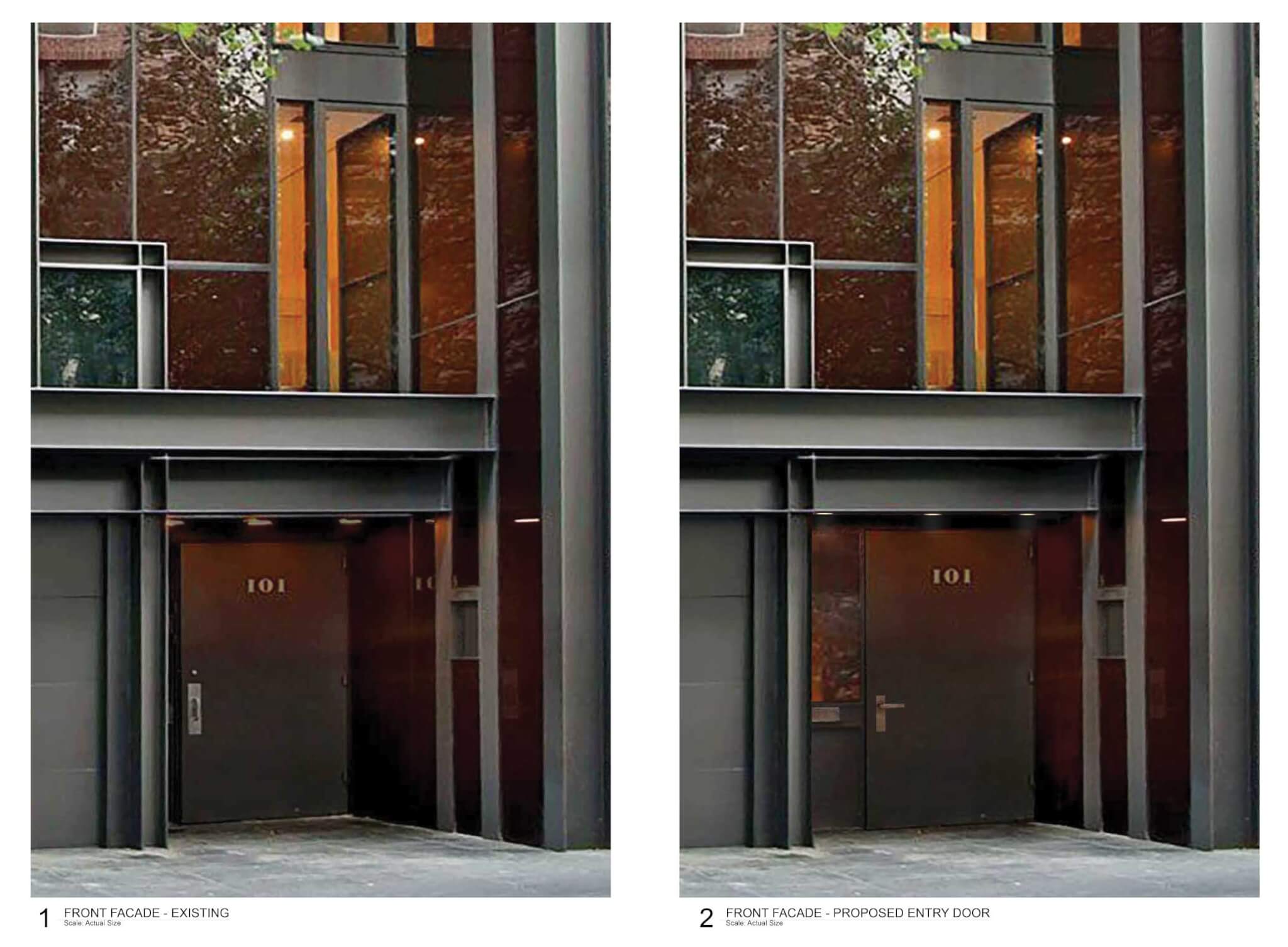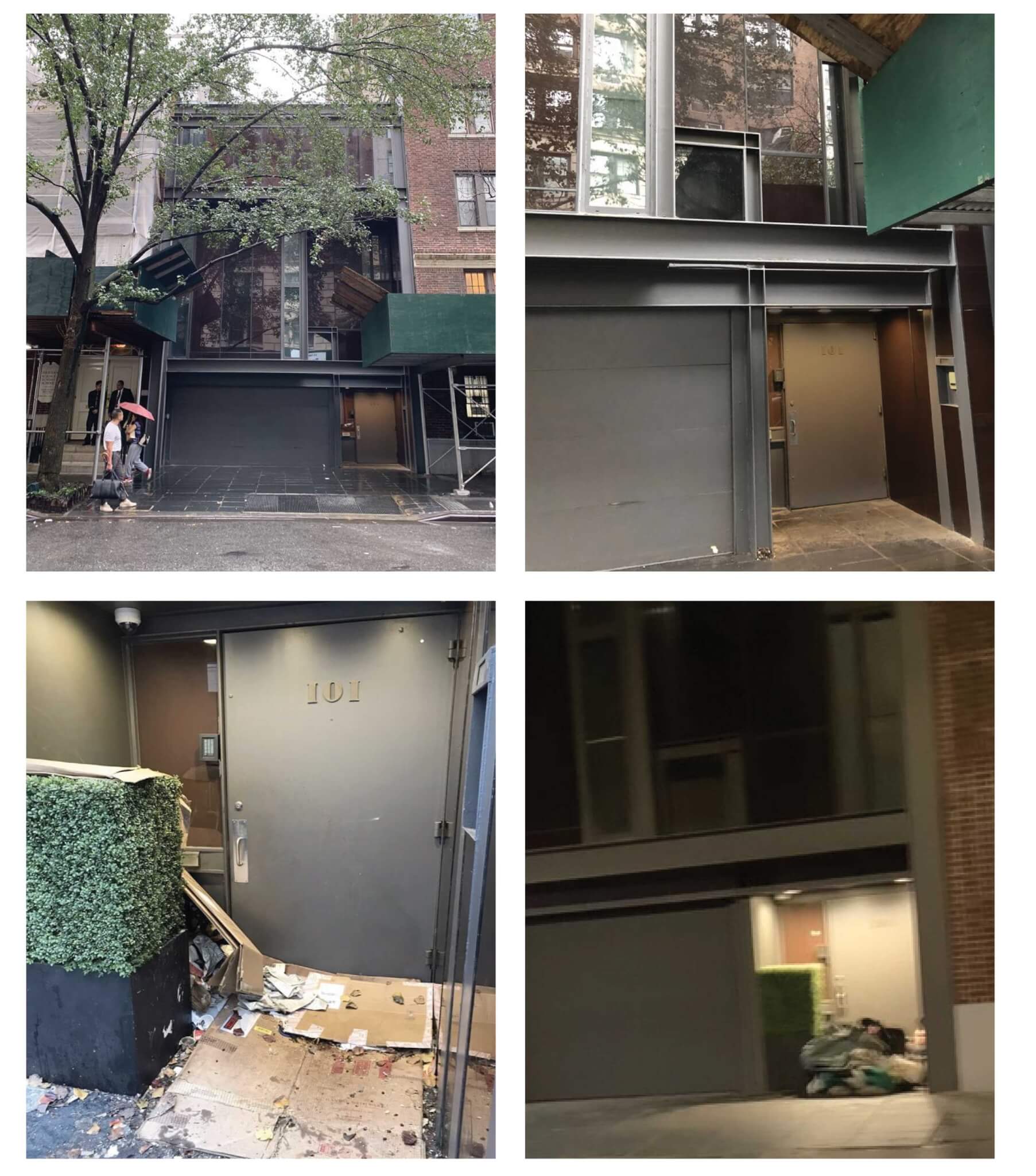At a private residence on the Upper East Side designed in 1966 by Paul Rudolph, trash billows and collects in the area comprising the building’s recessed entry, which has invited unhoused people to occupy the compact space. Yesterday the New York City Landmarks Preservation Commission (LPC) heard a proposal from Steven Blatz Architects and Studio Sofield to bump out the doorway by 19 inches.
Following a presentation by the architects, a public comment period, which heard from both Paul Rudolph organizations, Docomomo, other preservationists, and neighbors, a unanimous vote from the LPC commissioners shut down the proposal.

Commonly known as the Hirsch Residence or the Halston Residence, the modern townhouse at 101 East 63rd Street occupies the footprint of a former carriage house designed in 1881. In 1966, a lawyer and real estate investor Alexander Hirsch purchased the building and commissioned Rudolph to redesign it as a residence for himself and his partner. Its front facade is faced with steel and dark glass and a large garage door. Its upper level projects outward, while the entrance is recessed about four feet from the street.
Rudolph worked on the residence again in 1974 when the fashion designer Halston purchased the home. After a few other owners over the decades, in 2019 another fashion designer, Tom Ford, purchased the building. Ford reportedly dropped $18 million on the house; it is one of several modernist homes he owns across the country. In a 2019 interview with WWD, the designer, who has a degree in architecture, said the house is “a place to be when I’m in New York.”
A plan to modify the entryway of the residence presented to the LPC yesterday detailed the issues related to vagrancy and loitering. Under the redesign, the setback door would be moved out 19 inches to mitigate the aforementioned issues and improve access for the residents. This change would reduce the distance from the door to the property line from four feet to two-and-a-half feet.
During Tuesday’s session, Valerie Campbell, a partner at the law firm Kramer Levin who is working with the client, explained that the move was one of necessity.
“The four feet provides more of a secluded space that people were, unfortunately, taking advantage of,” she said.
The alteration would mean the soffit, outfitted with three lights, would need to reduce in size and the downlights replaced with smaller fixtures. A proposal to have the door open inward, instead of outward, as it does now, has already been approved by LPC. The architects proposed no changes to the upper floors.

A number of preservation groups and community members spoke out against the proposal, claiming the changes would detract from the interplay of planes, light, and shadows that define the facade, spatial qualities, and function of the interiors. Moving the entry outward, they argued, would reduce the shadows at the entrance.
“In our view, the entry door would no longer read as a recessed space but as a continuation of upper levels. These alterations would significantly alter the appearance of the street facade contrary to [Rudolph’s] intent,” said Sean Khorsandi of the Paul Rudolph Foundation.
“Recession and projections within the organizing structural frame are carefully calculated for visual effect. Any tampering with this balancing act of recession and projection such as is proposed by filling in the deep entry void will upset the extremely subtle asymmetric balance of Rudolph’s virtuoso composition,” added preservationist Theodore Grunewald.
Ford’s architects said they had looked at other options, including gates or other temporary structures, “but felt [they] modified the look of the facade too drastically.”
In response, Commissioner Anne Holford-Smith commented that if the residence was occupied more regularly, it is possible the issues related to vagrancy could stop.
The LPC ultimately dismissed the proposal to move the entry outward, but LPC Chair Sarah Carroll said there would be an opportunity to find another solution.











